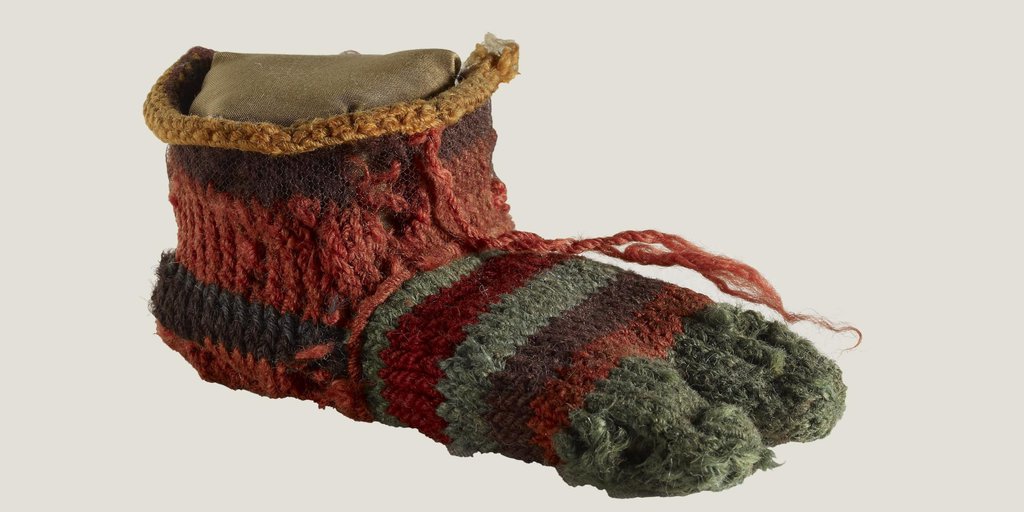
An ancient Egyptian sock was found in a landfill when the excavation of the Egyptian city of Antinooupolis took place from 1913 to 1914. It was thrown away sometime in the 3rd or 4th century and found by the English papyrologist John de Monins Johnson. After that, the old sock went to the British Museum in London. Now, new research is revealing the secrets of this ancient sock.
An Ancient Sock
Old research showed the age of the old sock, but there was nothing else known about it. The new research was done by a group of museum scientists who hoped to learn more about ancient Egyptian clothing manufacturing and trading. They analyzed the sock by paying attention to the dyes and comparing them to those in other textiles from 250 to 800 A.D.

The new analysis was done with the non-invasive approach of multispectral imaging. It simply scans the surface of artifacts and tests for pigments with striking accuracy. Even when colors have faded away and cannot be seen, multispectral imaging can give precise data and show traces of colors due to the different wavelengths of light they give off.
Finding the Sock’s Secrets
The analysis showed that the old sock was made of seven different shades of wool yarn woven together in a stripy pattern. The dyes used to create the color combinations for the sock were natural and plant-based. The intricacy involved in the making of the ancient sock is impressive, considering how tiny and fragile it is. Because of its size, scientists also believe the sock was worn by a child.

The sock shows more details about the time period 1700 years ago. These events affected many factors of society then, including the economy, trade, and access to materials, and that is shown in the technical makeup of everyday items like socks.
How Long Have Humans Worn Socks?
Socks are believed to have been part of human attire all the way back to the Stone Age. They were made out of animal pelts and skins and were simply wrapped around the feet.
The ancient Egyptians used an old single-needle looping technique that is also called nålbindning or knotless netting. It allowed to separate the big toe from the other toes in the sock and is still used to this day.